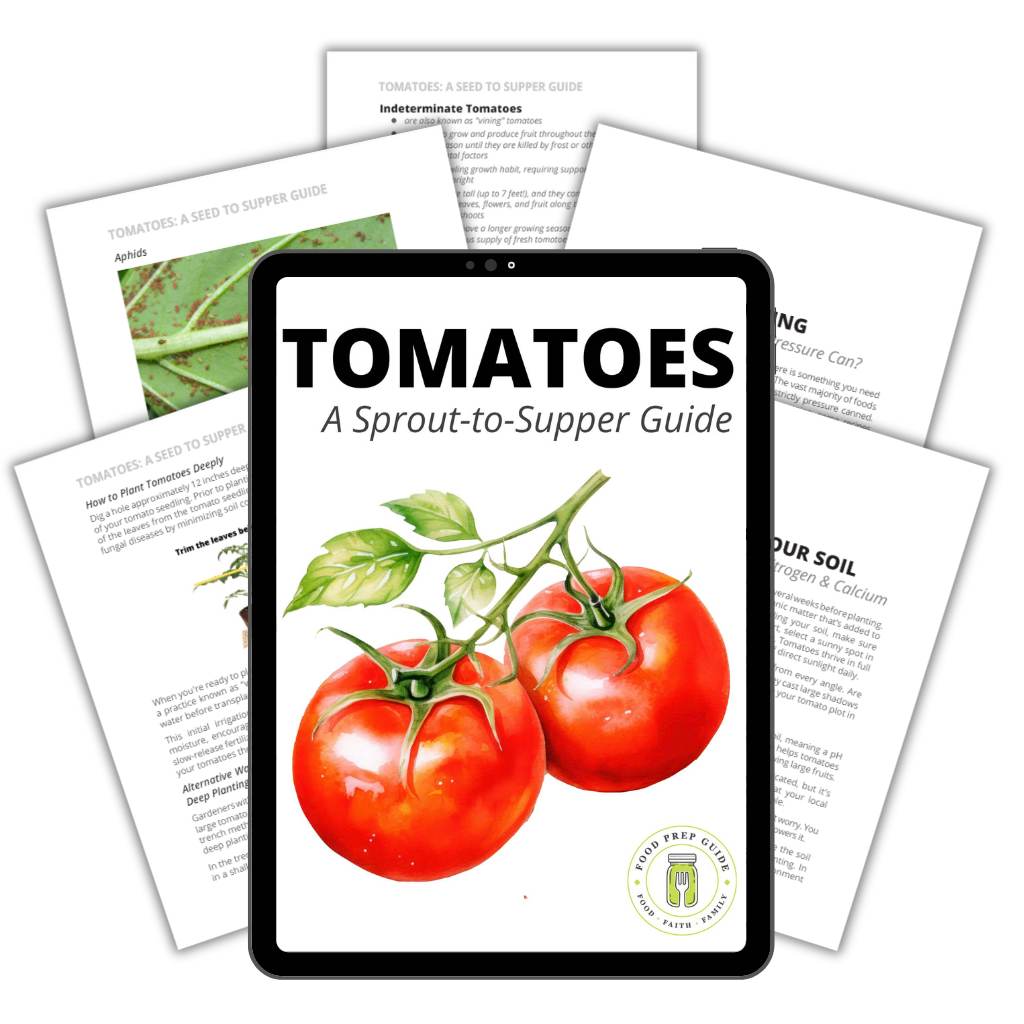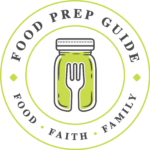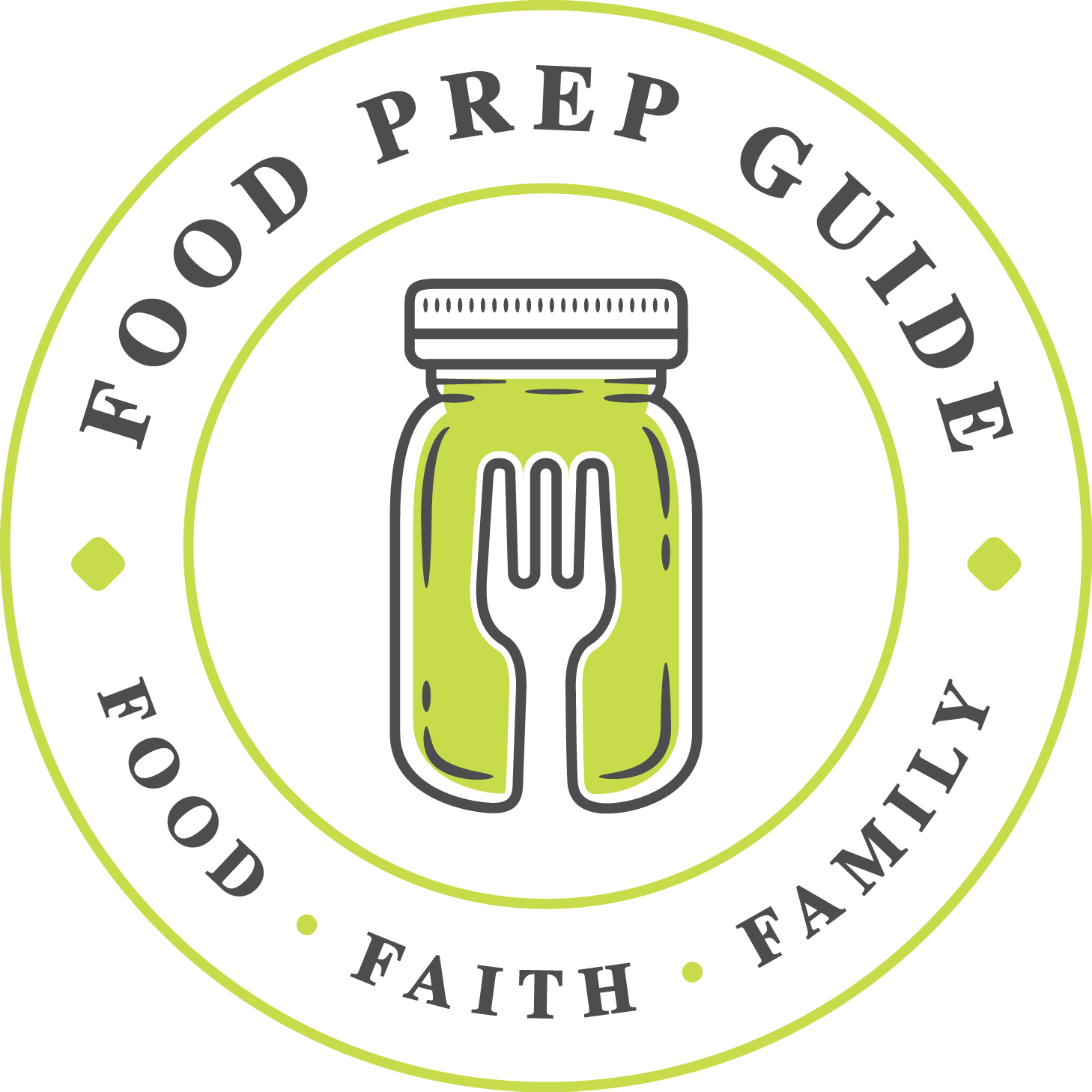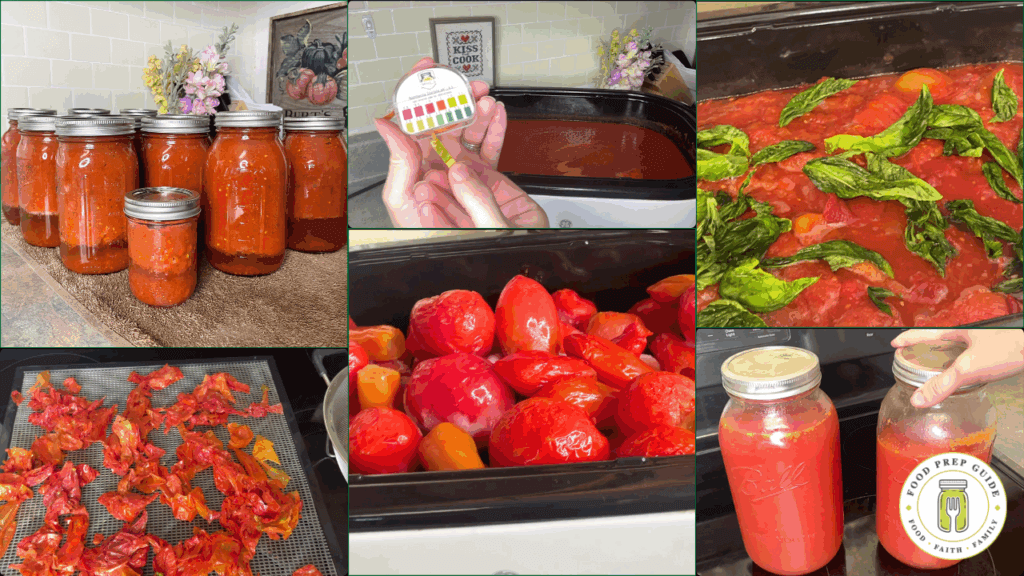If you’ve ever felt overwhelmed by preserving garden tomatoes—especially when they come in faster than you can keep up—this one’s for you.
Today, I’m sharing our long-promised tomato preservation system—the exact process we use to get thick, flavorful sauce without the runny mess.
Plus, we’ll show you how to get three preserved tomato products from a single harvest. Yes, ma’am—sauce, juice, and powder all in one go.
Whether you’re swimming in fresh tomatoes or (like us) stash them in the freezer to process when life slows down, this guide is packed with practical, step-by-step tips to stretch your harvest and stock your pantry—without wasting a single bit.
Let’s get started!
Why Two Processing Methods?
You’ll see two different techniques in this post, and here’s why:
- When we need maximum sauce yield, we use Method One—no straining, no separating, just thick, rich sauce straight from the tomatoes.
- When we’ve got enough sauce canned, we switch to Method Two to also make tomato juice and powder, stretching that harvest even further.
Two goals, two processes. Both simple. Both effective.
Method One: Rich, Thick Tomato Sauce (Maximum Yield)
This is our go-to method when the goal is filling the pantry with quart jars of tomato sauce.
Step 1: Start with Frozen Tomatoes
Yup, frozen! When tomatoes ripen in summer, we toss them in the freezer whole. No blanching. No peeling. It saves our sanity during the chaos of harvest season.
Step 2: Roast ‘Em Low and Slow
We use a countertop roaster oven—a workhorse for bulk preserving.
Prices pulled from the Amazon Product Advertising API on:
Product prices and availability are accurate as of the date/time indicated and are subject to change. Any price and availability information displayed on [relevant Amazon Site(s), as applicable] at the time of purchase will apply to the purchase of this product.
- Load up 5 gallons of tomatoes
- Set roaster to 200°F until they release liquid
- Then bump it to 300°F (or 350°F if you’re in a hurry)
- Stir every hour or two throughout the day
No added water = No watery sauce. 🙌
Step 3: Add Flavors & Thicken Naturally
Once the tomatoes are simmered down and soft, we add:
- 3 tbsp minced garlic
- 1 cup chopped onion
- 5–6 small cans tomato paste (secret to thick sauce!)
- ½–1 cup fresh basil
- 2 tbsp sea salt or canning salt
- 1 tsp Italian seasoning (optional)
- ½ cup red wine vinegar – adds acidity and flavor!
👉 Note: We don’t mince anything ahead of time. Just toss in whole basil and blend everything with an immersion blender—it saves loads of time.
Prices pulled from the Amazon Product Advertising API on:
Product prices and availability are accurate as of the date/time indicated and are subject to change. Any price and availability information displayed on [relevant Amazon Site(s), as applicable] at the time of purchase will apply to the purchase of this product.
Step 4: Check Acidity for Safe Water Bath Canning
We use pH strips to ensure the acidity is below 4.6. The red wine vinegar helps us get there. If it’s safe, we water bath can instead of pressure canning, which can give a slightly scorched flavor.
Water bath time:
40 minutes for quart jars (adjust for elevation)
Prices pulled from the Amazon Product Advertising API on:
Product prices and availability are accurate as of the date/time indicated and are subject to change. Any price and availability information displayed on [relevant Amazon Site(s), as applicable] at the time of purchase will apply to the purchase of this product.
Method Two: Three Products in One Batch
Once we have our sauce stockpile where we want it, we switch gears and start getting the most out of every tomato.
Step 1: Thaw & Peel Tomatoes
Let frozen tomatoes thaw in a bowl or sink. As they thaw:
- Skins slip off easily (save these!)
- Tomatoes release lots of juice—strain and save it
We’re separating the solids from the liquids now, so we can create:
- Tomato sauce (thicker portion)
- Tomato juice (strained-off liquid)
- Tomato powder (from skins)
Step 2: Can the Juice
The juice from thawed tomatoes is perfect for:
- Chili
- Soups
- Or just drinking (some folks love it!)
We collect the juice in half-gallon jars and store it in the fridge until we have enough to water bath can.
Step 3: Dehydrate the Skins for Powder
Don’t toss those peels!
- Spread them in a single layer on dehydrator trays
- Dehydrate at 125°F overnight (8–12 hours)
- Once crisp, grind into powder using a blender, spice grinder, or Vitamix
Tomato powder is one of our most-used pantry items. Add it to sauces, soups, casseroles—anywhere you want a burst of tomato flavor without the bulk or moisture.
Prices pulled from the Amazon Product Advertising API on:
Product prices and availability are accurate as of the date/time indicated and are subject to change. Any price and availability information displayed on [relevant Amazon Site(s), as applicable] at the time of purchase will apply to the purchase of this product.
Tips to Avoid Runny Sauce
Here’s the secret to thick, hearty, spoon-standing-up sauce:
Strain strategically. Only when you want to make juice, not when you’re after maximum sauce yield.
Start with frozen tomatoes. The freezing breaks down the cell walls and releases the liquid.
Roast, don’t boil. Roasting evaporates moisture without diluting flavor.
Add tomato paste. Game-changer for both flavor and thickness.
No water added. Resist the urge—even just a splash waters everything down.

Master Tomatoes from Seed to Table
Get growing (& preserving!) faster with no-fluff tutorials for every step from plant to plate. An 80+ page guide complete with a video library!
Preserving tomatoes can feel overwhelming, especially when you’re trying to make the most of your harvest. But when you follow this system—freezing now, preserving later—you save time, stress, and food!














